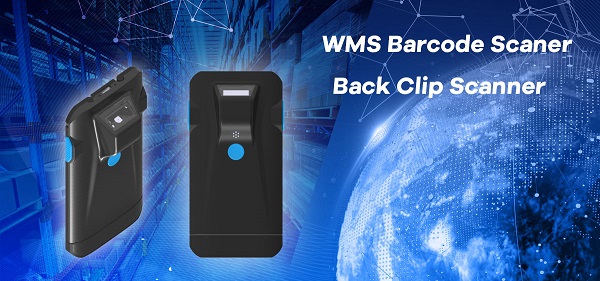 English
English-
 Español
Español
-
 Português
Português
-
 Portugiesisch
Portugiesisch
-
 Français
Français
-
 日本語
日本語
-
 Български
Български
-
 한국어
한국어
-
 Türkçe
Türkçe
-
 Nederlands
Nederlands
-
 English
English
-
 Eesti
Eesti
-
 Suomi
Suomi
-
 বাঙ্গালি
বাঙ্গালি
-
 беларуская
беларуская
-
 Ελληνικά
Ελληνικά
-
 Kreyòl ayisyen
Kreyòl ayisyen
-
 עִברִית
עִברִית
-
 हिन्दी
हिन्दी
-
 Magyar
Magyar
-
 íslenskur
íslenskur
-
 Gaeilge
Gaeilge
-
 italiano
italiano
-
 Hrvatski
Hrvatski
-
 Latinus
Latinus
-
 latviski
latviski
-
 Melayu
Melayu
-
 Malti
Malti
-
 Монгол
Монгол
-
 မြန်မာ
မြန်မာ
-
 فارسی
فارسی
-
 Polski
Polski
-
 عربي
عربي
-
 Română
Română
-
 русский
русский
-
 slovenský
slovenský
-
 Slovenščina
Slovenščina
-
 Afrikaans
Afrikaans
-
 svenska
svenska
-
 dansk
dansk
-
 український
український
-
 o'zbek
o'zbek
-
 Cymraeg
Cymraeg
-
Zulu
-
 Tiếng Việt
Tiếng Việt
-
 bosanski
bosanski
-
 Deutsch
Deutsch
-
 eesti keel
eesti keel
-
 ไทย
ไทย
- How on earth is QR code recognized? How does the black and white cube store data?
- The co-inventor of the bar code has died, He's the one who changed the round size into zebra print
- Is the IP protection level of the bar code scanning gun as high as possible?
- Choose and buy Industrial bar code scanner, stable use is more critical
The latest trend of Warehouse System WMS
Tue Jun 14 14:15:55 CST 2022
The latest trend of Warehouse System WMS

When foreign warehousing systems entered the Chinese market that year, the concepts of standardization, intelligence and configurability played some educational roles in the whole logistics software market. For example, the deployable logic of system guidance on shelves and picking was advanced and fashionable in that year. Which operations in the warehouse logistics center can be guided by the system, which work can be combined with manual processing The key points that KPI should monitor are gradually popularized to the whole market by the introduction of foreign software, which also slowly reveals the mystery of a professional warehouse management system.
1、 Development of WMS in China
Compared with foreign logistics software developed in 1980, the products and concepts of mature warehouse management system entered China around 2000. After more than ten years of vigorous development, Chinese people have become more and more clear about the cognition and positioning of warehouse system, and can understand the management scope and important objectives of warehouse system; From "the warehouse management system is to manage all things in the warehouse" and "all businesses related to inventory belong to the warehouse management system", it is gradually clear that the warehouse management system focuses on "goods", "physical inventory in the warehouse" and "efficient operation of in and out inventory". When foreign warehousing systems entered the Chinese market that year, the concepts of standardization, intelligence and configurability played some educational roles in the whole logistics software market. For example, the deployable logic of system guidance on shelves and picking was advanced and fashionable in that year. Which operations in the warehouse logistics center can be guided by the system, which work can be combined with manual processing The key points that KPI should monitor are gradually popularized to the whole market by the introduction of foreign software, which also slowly reveals the mystery of a professional warehouse management system.
The warehouse management system developed by domestic manufacturers, after years of replacement and iteration, the standard functions in the warehouse are from receiving, quality inspection, shelves, waves, picking, packaging, loading and outbound to warehouse management. Basically, with the continuous increase of online customers, the functions are becoming more and more complete. Slowly, the gap between these basic functions and foreign software has been narrowed, If we make a superficial observation, we can say that there are no very special functions that are available in foreign systems but not in domestic systems. Moreover, with the implementation and support of localization, some special functions are not impossible to develop. Why do you prefer to abandon solutions within RMB 1 million and choose millions of large-scale foreign solutions? The main reasons can be summarized as follows: (1) pure function richness. At present, the top foreign storage system can list hundreds of sub functions. These complex functions like a Book of heaven make people believe that they can cover current and future needs. Therefore, it is worth spending more cost to avoid continuous modification in the future, Conversely, some arguments argue that it is not cost-effective to spend a lot of money on only 30% of the functions, and it is not possible to directly apply these functions in the future( 2) With a wide range of global customers and a R & D team built with a large amount of money, especially for the company that is ambitious to squeeze into the international front-line manufacturers, adopting a system selected by an international well-known company with similar business is close to the competitive advantage, which is a great incentive; The most common negative opinion of this idea is to emphasize that the operation of China's logistics center is very different from the foreign environment and can not be applied( 3) Using the software ranking first and second in the world can reduce the political risk for the IT person in charge of model selection in some way: we all choose the first in the world. If there is a problem with the project, it must not be the problem of product selection. In addition to globalization, the gap between WMS manufacturers at home and abroad is indeed narrowing, including the increasing number of cases of super large and complex logistics centers for domestic manufacturers. In short, different WMS boundaries such as package software and customized development at home and abroad are gradually blurred. Foreign manufacturers are no longer always at sky high prices, and domestic manufacturers are no longer always doing small and medium-sized logistics center systems.
2、 The influence of Internet age on Logistics
In addition to the small change in the demand of third-party logistics (except the cold chain), the popular industry of logistics and warehousing in the past decade has been led by medicine, food retail and clothing in turn. In the past two years, it is generally recognized that the Internet B2C industry should be the first to be introduced, derived from o2o and cross-border areas, especially in the listing of Taobao and JD, the competition of bat and the war of M & A, For it information and even people's daily consumption and entertainment, it has gradually shifted to the mobile Internet. Mobile app is the focus of venture capital funds. I'm afraid to miss the opportunity. What about logistics? Of course, it is also greatly affected. The mobile phone public platform of the distribution system (TMS), the mobile phone push of express information, the online receipt of freight orders, and the real-time broadcast of distribution status and location are all the products of the booming Internet. But in the field of warehouse management? It is not a good idea to use mobile phone management in the logistics center. At most, it is to push the operation status in the warehouse to the manager's mobile phone in real time; However, these e-commerce related industries do make more people pay attention to the importance of warehouse management, and the demand also shows a high growth trend. This era of e-commerce has also brought some great impact to the warehouse management system: (1) more and more users participate in the warehouse system, and many users deeply understand the functions of the package software, which is not consistent with the publicity( 2) In the competition of e-commerce, the business needs are changing every day. The competition is about speed. The competition is about who can realize it faster. If you make a mistake, change it again and try again. In this environment, it is difficult for each demand to just find a manufacturer for a meeting. Therefore, the main products of large domestic e-commerce adopt the strategy of self-development (except for non main businesses, manufacturers may be found), such as JD, store 1 Dangdang, etc( 3) With abundant it teams, domestic medium and large e-commerce companies have successively established their own huge it teams. Therefore, they increasingly hope to be managed by their own teams for the functional requirements of warehousing and logistics( 4) Many entry-level companies of e-commerce have no way to predict the growth rate of business. The explosive nature of the Internet is no longer comparable to traditional retail and other industries. Therefore, for example, each IT director does not have a very positive answer to what system or function should be used in the logistics center three years later. Some enterprise leaders adopt "choose a cheap one first, But the pain and uncertainty of switching the system is also a recognized problem.
The rise of the Internet is a good opportunity for domestic logistics software manufacturers. Facts have proved that it has indeed nurtured many domestic warehouse management software and reduced the entry of warehouse systems, which is also related to the investment of consulting and technical talents who have worked in large foreign logistics software companies into domestic manufacturers, However, the main reasons are still the impact of the above Internet on logistics software: for example, the increased demand derived from Taobao sellers' self built warehousing, the urgent need for low-cost logistics software for e-commerce entrants, and the difficulty of fast online for traditional foreign large-scale warehousing systems, which contribute to the popularization of warehousing and logistics software, It also makes people in the industry think about what is the best warehouse management system model.
3、 WMS trends and demand satisfaction
The initial development mode of the warehouse system is on-demand development. Factors such as risk, development timeliness and best practice have focused people's attention on the mature package software system. No matter what method is the best, some people believe that it should be "seven or eight standard functions and two or three customized". If we discuss it from the perspective of the characteristic logistics center of the e-commerce industry, Compare several traditional storage system methods: (1) customized development: it is developed completely according to the needs of users. It is necessary to avoid falling into the requirements put forward by users. It is necessary to have experience to judge whether any demand is reasonable and will have a negative impact. This model, especially when the business demand changes, most often encounters bottlenecks. For example, the logistics center suddenly focuses on clothing inventory, and recently needs to add food business. Some basic batch number management and validity period control may become bottlenecks( 2) Foreign packaged software: it has very rich functions, especially the large-scale system oriented by configuration parameters, which can meet the needs with complex parameter adjustment. However, according to many years of experience in the domestic market, one way of complex parameter configuration is that the light test time may be close to the development cost, and the other is that there are always special needs that cannot be met with parameters, At that time, the cost of modifying the original code is even more considerable. Third, even if the parameters can be configured, they often sacrifice the on-site requirements to cooperate with the system functions because they can not fully meet the actual operation habits or needs( 3) Domestic packaged software: programmers' day and night development is generally used to make up for the lack of parameter flexibility. For users,



